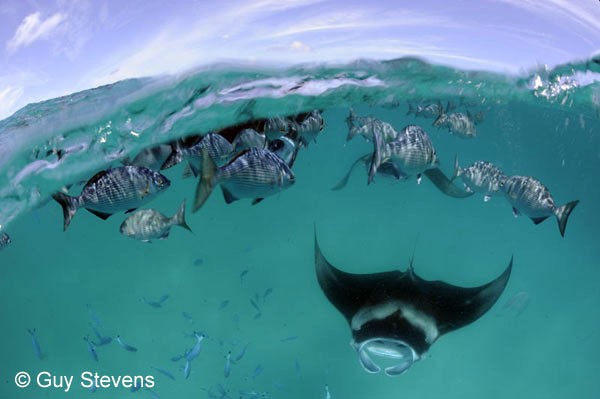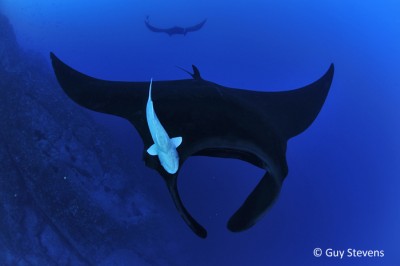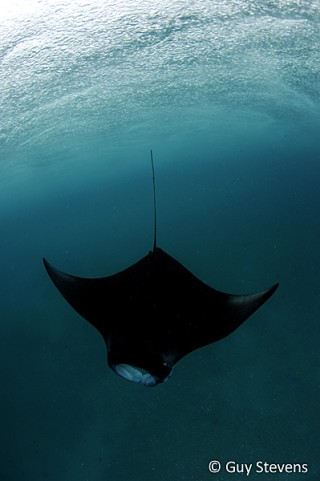Manta and devil rays in Fiji

Status
Endangered/vulnerable
Population
Unknown
Scientific name
Reef manta ray (Manta alfredi), Giant manta ray (Manta birostris) and Giant devil ray (Mobular mobular)
Funding for this project has now finished
Manta rays and Mobula rays, otherwise known as devil rays, represent an important and charismatic component of marine ecosystems. They are useful indicators of a healthy oceanic ecosystem and they can provide substantial economic benefits to developing countries through ecotourism.
The problem
Manta and Mobula rays, together know as mobulids, are increasingly threatened by fishing, both as the target species and also as bycatch. Unfortunately there is huge international demand for their gill plates which are widely used in traditional medicines. Unfortunately, these fisheries are unsustainable, as the rays reproduce very slowly, and so populations are less able to recover from fishing.
Thanks to a push by researchers and conservationists worldwide, these rays were successfully listed on the Convention for the International Trade in Endangered Species (CITES) in 2013 and 2016, which monitors and regulates the trade in listed species and their parts. However the morphological similarities and taxonomic uncertainties make identification of mobulid rays and their traded parts challenging. This in turn makes it very hard to enforce the law properly and reduce the trade in these wonderful creatures. Furthermore, if we are to ensure that effective management strategies are put in place to protect them, understanding their population and genetic structure is paramount.
The solution
Working within a partnership of Bangor University, The Manta Trust, and the Royal Zoological Society of Scotland, this project is making use of advances in DNA sequencing technologies to fill these gaps in our knowledge. This means we can then effectively inform conservation policy worldwide. With PTES funds, we are currently working on producing genetic data to resolve taxonomic uncertainties within the mobulids. It will then be possible to successfully identify the different species and trace mobulid products to monitor trade and illegal activity.
Furthermore, we are continually increasing the number of tissue samples available for genetic analysis, through targeted fieldwork and collaborations with researchers all over the world. With new samples being collected this summer, we aim to investigate the genetic basis behind the black morph colouration of some manta rays, which is particularly prevalent in the Pacific Ocean, and examine the adaptiveness of this trait. Finally, we are also using genetic data to investigate the extent and nature of local adaptation and genetic diversity within Manta ray populations, to generate recommendations for their conservation.
Thank you to all our donors who helped us fund this work. You can help us support more projects like this with a donation today:


